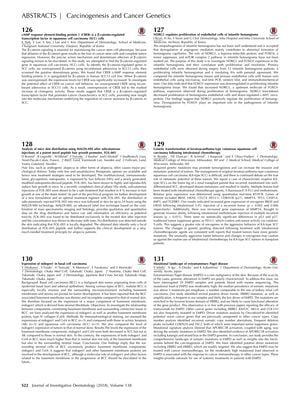Genetic Transformation of Keratoacanthoma-Type Cutaneous Squamous Cell Carcinoma Following Intralesional Chemotherapy
April 2018
in “
Journal of Investigative Dermatology
”

TLDR Intralesional chemotherapy with 5-fluorouracil and methotrexate may worsen keratoacanthoma-type skin cancer in transplant patients.
The document reports on various studies related to carcinogenesis and cancer genetics. One study found that CREB is a ß-catenin-regulated transcription factor that promotes cancer characteristics in squamous cell carcinoma (SCC) cells. Another study showed that a peptide, FOL-005, induced hair growth in mice and was distributed exclusively in the treated skin, supporting its clinical development for alopecia. A case of keratoacanthoma-type cutaneous squamous cell carcinoma (KA-type SCC) in a renal transplant patient was discussed, where intralesional chemotherapy with 5-fluorouracil (5-FU) and methotrexate led to increased expression of oncogenes and invasive ability, suggesting caution in using such treatments for KA-type SCC in transplant patients. Additionally, a study on infantile hemangioma suggested that NDRG1 positively regulates proliferation and may play a role in its pathogenesis. Lastly, an analysis of extramammary Paget disease (EMPD) identified several putative driver mutations and suggested that EMPD may respond to cancer immunotherapy due to its moderately high mutational load.




